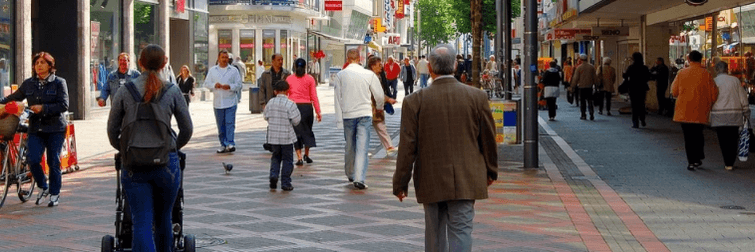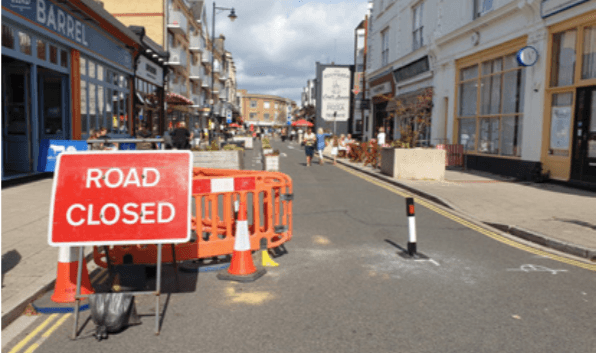
blog: How can we deliver the urban streets of the future?
Thursday 22nd April 2021
As transport planners, we play a critical role in delivering the means for people to travel safely and sustainably but also, and just as importantly, in creating great places. There is a lot of discussion of new technology emerging – micro-mobility, MaaS, electrification, autonomy – but broadly speaking, and with a few notable exceptions in our major cities, the way transport is planned and delivered has not changed significantly for years.
With the climate emergency requiring big changes in the way we travel and the pandemic showing us we can implement change at pace, we need to be adaptive and responsive to demand and open to implementing innovative solutions.
The choices we make as transport planners and the infrastructure we deliver have a huge impact on the choices people make in how they travel.
Taking steps to drive forward change
Congested urban streets that are dominated by cars make people feel unsafe – particularly pedestrians and cyclists – and cause frustration for everyone, including those using the cars that are causing the congestion in the first place. If we are to rebound from the COVID pandemic and if new life is to be breathed into our high streets, we will need to think about the quality of the places we are creating, not just the amount of traffic that can be moved from A to B.
Cars are of course a vital form of transport for some people and basic levels of access need to be maintained, however in general it is essential that walking, cycling, and public transport are prioritised in the cities of the future. This is an agenda that is recognised in a lot of transport planning guidance, such as Manual for Streets, which dates back to 2007. ITP is involved in updating the Manual for Streets guidance, which will take account of emerging trends in transport to influence the way urban streets are designed and delivered in the future.
In recent years, and increasingly over the course of the pandemic, local authorities have been trialling a range of bold transport solutions that seek to reduce traffic and congestion. These developments, many of which were first delivered decades ago, are likely to continue and have the potential to change the landscape of our towns and cities in years to come. Some examples include:
- Low Traffic Neighbourhoods (LTNs) – this is one example of how local authorities are taking steps to reduce through traffic and accelerate changes to levels of walking and cycling.
- 15-minute neighbourhoods – designed to enable communities to access all of their most basic, day-to-day needs within a 15 or 20-minute walk from their home. Neighbourhoods of this kind make active travel modes more convenient than driving for local trips. Several London boroughs are currently implementing 15-minute neighbourhoods.
- Repurposing on-street parking – most of our towns and cities were designed and built before the advent of the car. Repurposing the significant amount of land given over to cars in recent decades can contribute to a shift towards more sustainable modes. Transforming car parking spaces into green infrastructure, including parklets, community gardens, and trees, could change the way streetscapes are used and perceived.

The approaches above can be controversial and feel threatening to many because for decades our towns and cities have been re-made around the car and many people have structured their lives around them.
It is therefore essential that local people are consulted and are given the opportunity to influence the way urban streets are designed.
The delivery of schemes at pace over the pandemic with experimental traffic orders has led to criticism from some quarters. However, the ability to allow people to experience changes first-hand then tweak and amend schemes is a powerful one as often people prefer the quieter, safer streets that result. As transport planners we need to engage with people and listen and understand their experiences, so public opposition doesn’t override the positive outcomes we are seeking to achieve.
To find out about ITP’s experience in similar projects, or how we can help design and deliver sustainable transport schemes, please get in touch.
